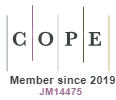Upośledzenie umysłowe jako niepełnosprawność i jako sposób bycia człowiekiem
DOI:
https://doi.org/10.18778/1733-8069.11.3.02Słowa kluczowe:
upośledzenie umysłowe, niepełnosprawność intelektualna, polityka segregacyjna, integracja, inkluzja, różnorodność, człowieczeństwoAbstrakt
Artykuł dotyczy problematyki używania pojęć określających osoby upośledzone umysłowo versus niepełnosprawne intelektualnie versus z niepełnosprawnością intelektualną. Za używaniem każdego z tych pojęć kryją się przesłanki o charakterze aksjologicznym i światopoglądowym. Poprawność polityczna skłania do zastępowania wyrażeń piętnujących bardziej neutralnymi. Pojawia się jednak pytanie: skąd w języku pojawiły się określenia mające charakter dyskryminacyjny. W artykule ukazane są przykłady stosowania do lat siedemdziesiątych dwudziestego wieku polityki segregacyjnej, w wyniku której osoby niepełnosprawne intelektualnie przebywały w zamkniętych zakładach całodobowej opieki, oddalone od głównego nurtu życia społecznego. Ukazany został przerażający obraz losu osób pozbawionych podstaw godności ludzkiej, na podstawie amerykańskiej publikacji z tamtego okresu. Sytuacja ta spowodowała, że stosowane wobec osób niepełnosprawnych intelektualnie określenia sankcjonowały ich gorszą pozycję w społeczeństwie. Zaczęło się to zmieniać po wprowadzeniu w krajach zachodniego kręgu cywilizacyjnego polityki integracji i inkluzji społecznej. W drugiej części artykułu podjęto rozważania dotyczące rozumienia słów „niepełnosprawność” oraz „inteligencja” (słowa obecnego w pojęciu niepełnosprawność intelektualna). Ukazano dwa sprzeczne rozumienia terminu inteligencja: wywodzące się ze starożytności oraz wprowadzone przez nowoczesne systemy miar psychologicznych. Ukazano jakie konsekwencje dla rozumienia kondycji człowieka uwikłanego we współczesny świat ma posługiwanie się tymi dwoma rozumieniami terminu inteligencja. W konkluzji stwierdzono, że upośledzenie umysłowe nie musi być traktowane jako brak czy dysfunkcja, lecz może być – zgodnie z polityką różnorodności – traktowane jako równoprawny sposób bycia człowiekiem, różny od sposobu manifestowania się człowieczeństwa wśród statystycznej większości obywateli, niemniej odznaczający się swoistą specyfiką i pięknem.
Pobrania
Bibliografia
Andreoli, Vittorino. 2007. Moi wariaci. Wspomnienia psychiatry. Translated by M. Bielawski. Cracow: Wydawnictwo Homini.
Google Scholar
Blatt, Burton and Fred Kaplan. 1974. Christmas in Pulgatory. A Photographic Essay on Mental Retardation. Syracuse, New York: Human Policy Press.
Google Scholar
Chodkowska, Maria and Beata Szabała. 2012. Osoby z upośledzeniem umysłowym w stereotypowym postrzeganiu społecznym. Lublin: Wydawnictwo UMCS.
Google Scholar
Deary, Ian J. 2012. Inteligencja. Translated by E. Wojtych. Sopot: GWP.
Google Scholar
Gadamer, Hans-Georg. 2008. “Filozoficzne uwagi o problemie inteligencji.” Pp. 181-195 in Teoria, etyka, edukacja. Eseje wybrane, edited by P. Dybel. Translated by A. Mergler. Warsaw: Wydawnictwo UW.
Google Scholar
Goffman, Erving. 1961. Asylmus: Essays on the Social Situation of Mental Patients and Other Inmates. New York: Doubleday Anchor.
Google Scholar
Gustavsson, Anders. 1996. “Reforms and everyday meanings of intellectual disability.” Pp. 215–235 in Intellectual Disabilities in the Nordic Welfare States. Policies and Everyday Life, edited by J. Tøssebro, A. Gustavsson and G. Dyrendahl. HoyskoleForlaget: Norwegian Academic Press.
Google Scholar
Heidegger, Martin. 1994. Bycie i czas. Translated by B. Baran. Warsaw: Wydawnictwo Naukowe PWN.
Google Scholar
McRuer, Robert. 2006. Crip Theory. Cultural Signs of Queerness and Disability. New York and London: New York University Press.
Google Scholar
Risley, Todd and James Favell. 1979. “Constructing a Living Environment in an Institution.” Pp. 3-24 in Behavioral Systems for the Developmentally Disabled: II. Institutional, Clinic, and Community Environments, edited by L.A. Hamerlynck. New York: Brunner/Mazel, Publishers.
Google Scholar
Shevlin, Michael and Astrid Mona O’Moore. 2000. “Fostering positive attitudes: reactions of mainstream pupils to contact with their counterparts who have severe/profound intellectual disabilities.” European Journal of Special Needs Education 15(2):206-217.
Google Scholar
DOI: https://doi.org/10.1080/088562500361628
Swenson, Richard P., Tom Seekins and Chrys Anderson. 1979. “The Design of Service Delivery Systems and Habilitative Environment.” Pp. 25-46 in Behavioral Systems for the Developmentally Disabled: II. Institutional, Clinic, and Community Environments, edited by L.A. Hamerlynck. New York: Brunner/Mazel, Publishers.
Google Scholar
Szabała, Beata. 2010. “Stereotypy odnoszące się do osób z upośledzeniem umysłowym – konsekwencje i sposoby zmian.” Pp. 61-71 in Stereotypy niepełnosprawności. Między wykluczeniem a integracją, edited by M. Chodkowska. Lublin: Wydawnictwo UMCS.
Google Scholar
Tøssebro, Jan, Maarit Aalto and Peter Brusén. 1996. “Changing ideologies and patterns of services.” Pp. 45-66 in Intellectual Disabilities in the Nordic Welfare States. Policies and Everyday Life, edited by J. Tøssebro, A. Gustavsson and G. Dyrendahl. HoyskoleForlaget: Norwegian Academic Press.
Google Scholar
Pobrania
Opublikowane
Jak cytować
Numer
Dział
Licencja

Utwór dostępny jest na licencji Creative Commons Uznanie autorstwa – Użycie niekomercyjne – Bez utworów zależnych 4.0 Międzynarodowe.














